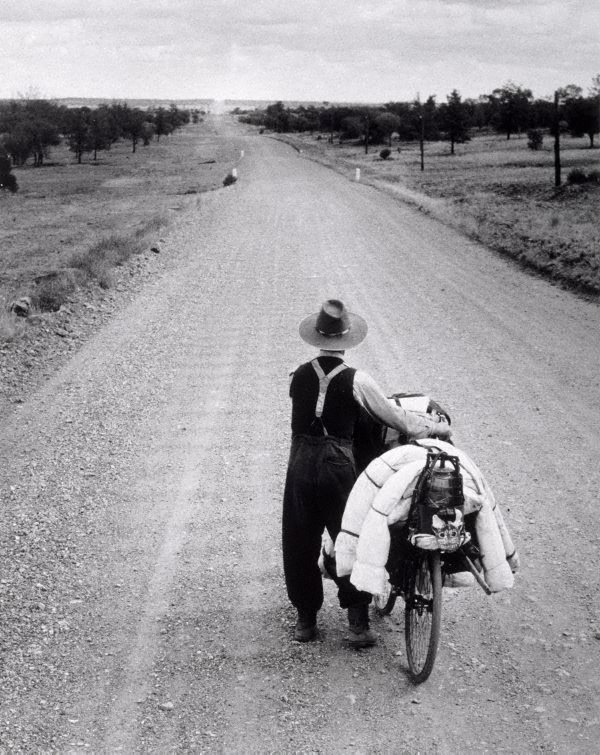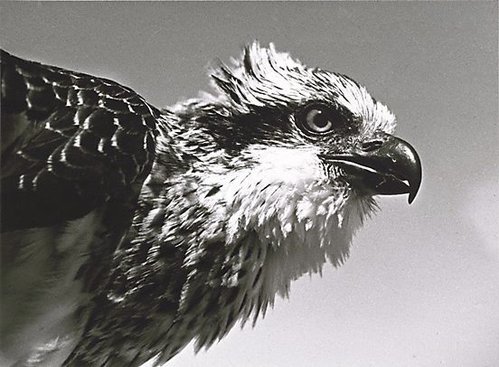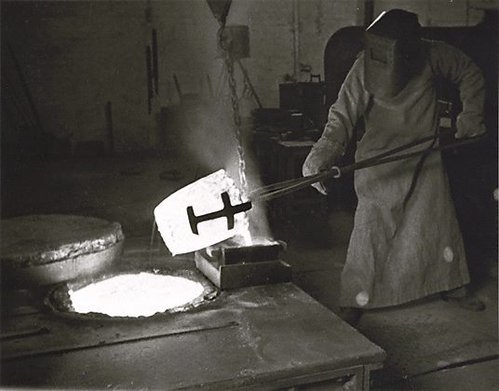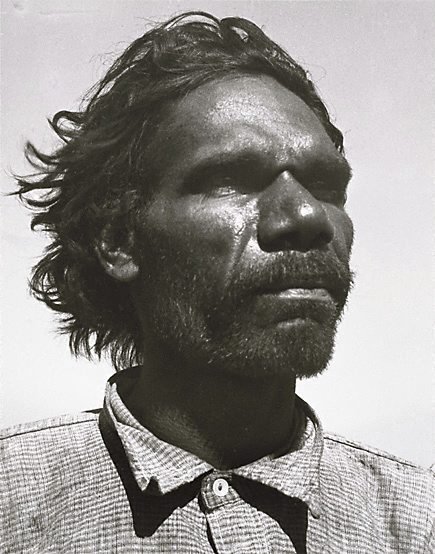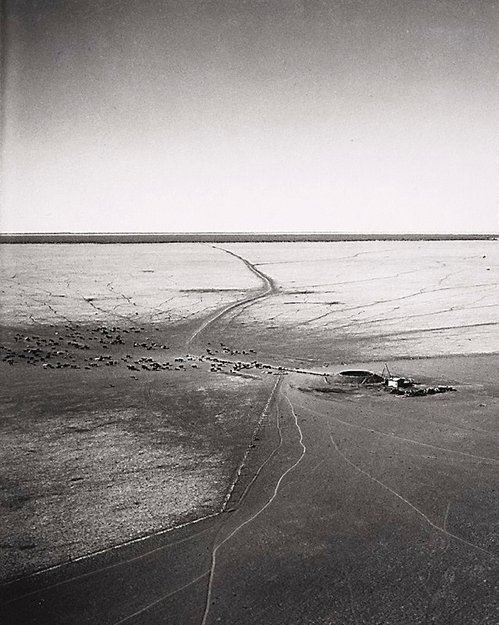Title
Swagman on the road to Wilcannia, New South Wales
1953
printed 1982
Artist
-
Details
- Other Title
- The Swagman
- Dates
- 1953
printed 1982 - Media category
- Photograph
- Materials used
- gelatin silver photograph
- Dimensions
- 38.8 x 30.7 cm image; 49.3 x 39.0 cm sheet
- Signature & date
Signed and dated l.r. sheet, pencil, "Axel Poignant 1953". Signed l.c. verso, ink "Axel Poignant".
- Credit
- Purchased 1978
- Location
- Not on display
- Accession number
- 183.1978
- Copyright
- © Courtesy Roslyn Poignant
- Artist information
-
Axel Poignant
Works in the collection
- Share
-
-
About
Inspired by American rural photographs taken for the Farm Security Administration from 1937, as well as the earlier realism of new photography portraiture, Axel Poignant consciously expressed what he had to say about the subject through documentary photography. Poignant had journeyed extensively through remote areas of Australia, independently and on assignment, and undoubtedly empathised with the ‘swagman’. This image resonates with the mythology of national identity which focused on the outback, embedded in the national psyche by Banjo Paterson’s unofficial anthem ‘Waltzing Matilda’: the independent spirit facing adversity. The swag – also known as the ‘matilda’ – of rolled up blankets, was an essential item carried by itinerant workers when walking the long roads of Australia and sleeping out. Poignant recalled meeting the swagman:
The bike had no chain or pedals. He used it to carry his worldly goods – tent fly, pots and pans, tucker and water and also some books. He gave his name as George Meredith and he was making his way from Paroo to Menindie which he expected to reach months later. He didn’t go to ‘The Hill’ [Broken Hill] anymore. It was too far. We met up with him just past the Springfield Tank. 1The photograph captures the self-reliance and dignity of a figure with the pathos of a Charlie Chaplin character. Taken from a high angle, the swagman is centrally positioned in the foreground which exaggerates the length of the road leading to a distant horizon. The image suggests that for the lone swagman the journey rather than the destination is his raison d’être as he walks on and away from the photographer.
1. Newton G 1982, ‘Axel Poignant: photographs 1922–1980’, Art Gallery of New South Wales, Sydney/Beaver Press, Sydney
© Art Gallery of New South Wales Photography Collection Handbook, 2007
-
Exhibition history
Shown in 7 exhibitions
6 Photographers, David Jones' Art Gallery, Sydney, Sydney, 30 May 1955–06 Jun 1955
Three years on: acquisitions 1978-81, Art Gallery of New South Wales, Sydney, 15 Oct 1981–01 Dec 1981
Axel Poignant: photographs 1922-1980, Art Gallery of New South Wales, Sydney, 17 Jul 1982–29 Aug 1982
Seeing is believing - the art in photography, Art Gallery of New South Wales, Sydney, 13 Dec 1985–19 Jan 1986
Four Photographers, Art Gallery of New South Wales, Sydney, 02 Jun 1990–19 Aug 1990
Photographs from the Collection, Art Gallery of New South Wales, Sydney, 30 Mar 1993–09 May 1993
Australian postwar photodocumentary, Art Gallery of New South Wales, Sydney, 12 Jun 2004–08 Aug 2004
-
Bibliography
Referenced in 8 publications
-
Natasha Bullock, Australian postwar photodocumentary, Sydney, 2004. no catalogue numbers
-
Josef Lebovic Gallery and Helen Ennis, Masterpieces of Australian Photography, Twentieth Century Photography, Sydney, 1989, 182, 183 (illus). cat.no. 325
-
Gael Newton, Silver and Grey - Fifty Years of Australian Photography 1900-1950, 1980. plate no. 96
-
Gael Newton, Edmund Capon AM, OBE and Hal Missingham, Axel Poignant retrospective, Sydney, 1982. cat.no. 74
-
Gael Newtown, Three years on: a selection of acquisitions 1978-1981, 'Photography - Australian, European and American', pg. 67-84, Sydney, 1981, 80 (illus.). cat.no. 34
-
Rose Peel, Photography: Art Gallery of New South Wales Collection, 'Australian postwar photo-documentary', pg.189-207, Sydney, 2007, 194, 201 (illus.).
-
Ursula Prunster, Seeing is believing: the art in photography, Sydney, 1985. cat.no. 35
-
Author Unknown, Photography: A Contemporary View, Sydney, 1978, 11.
-
